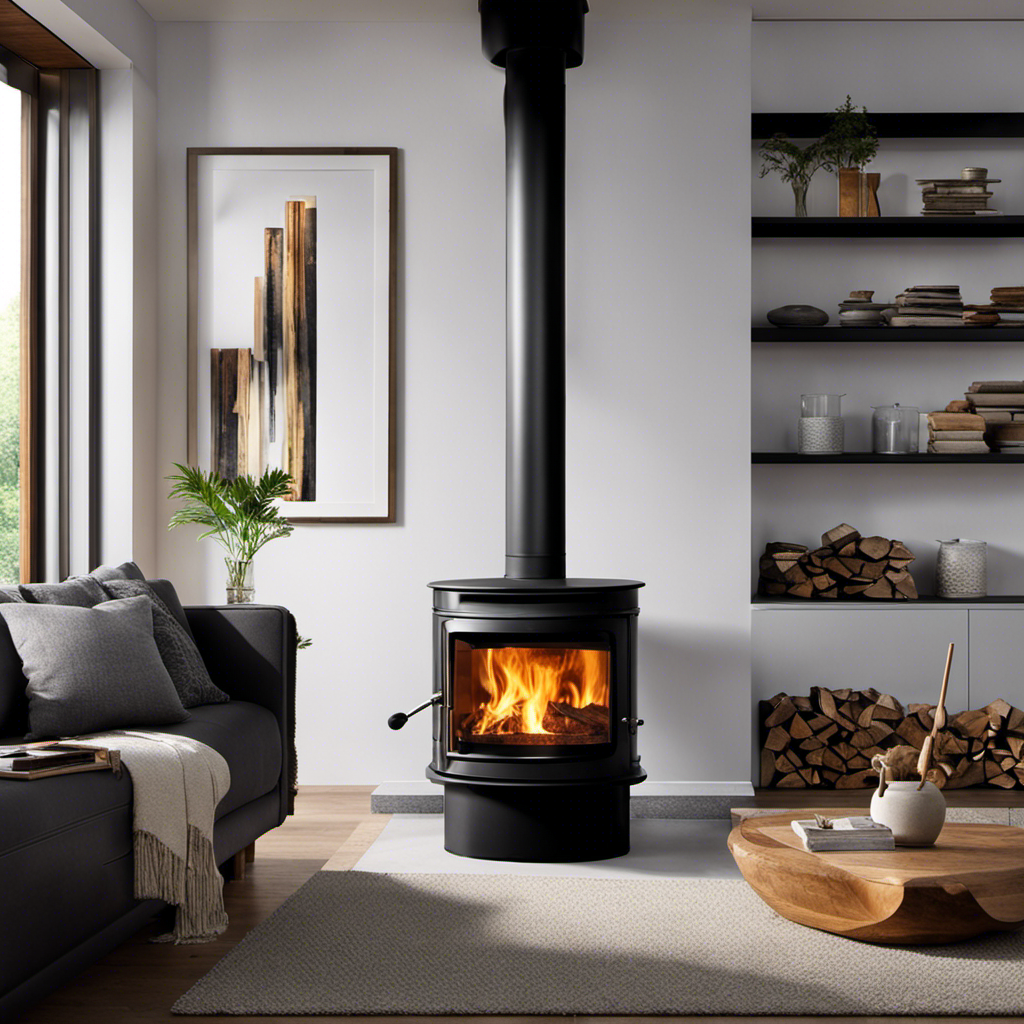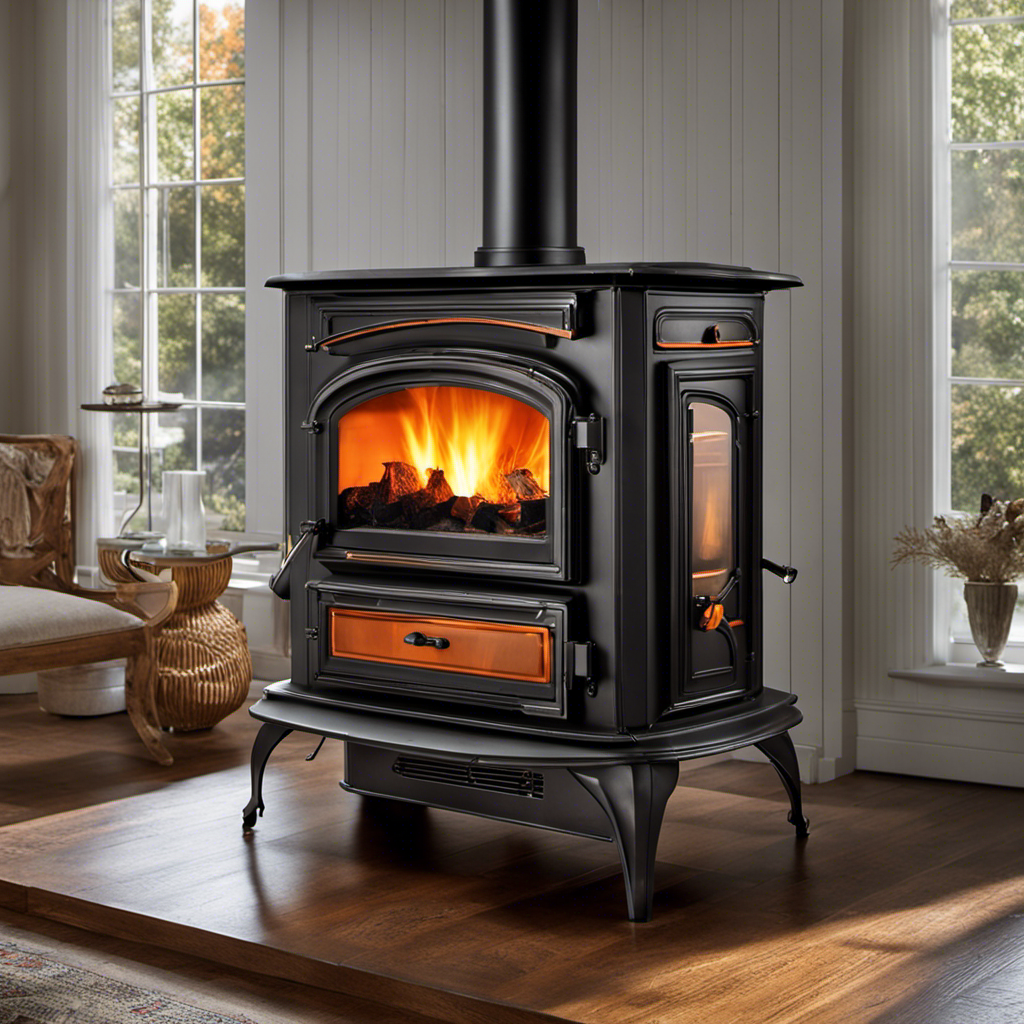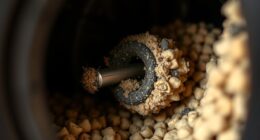I have always appreciated the cozy warmth that my Vermont Castings wood stove provides, but it seems like its appeal has faded over time. With a determination to revive its beauty, I set out on a mission to explore how to repaint it.
In this article, I’ll share the step-by-step process I followed, from preparing the surface to choosing the right paint and applying it flawlessly.
Get ready to transform your wood stove and enjoy its beauty for years to come.
Key Takeaways
- Preparing the wood stove surface is crucial before painting, including removing rust, wiping down with a damp cloth, and sanding.
- Choosing the right paint is important, such as high-temperature paint rated for up to 1200°F, considering home decor, and selecting a durable and resistant paint.
- Cleaning and priming the wood stove properly is essential before painting, including removing debris and ash, cleaning with mild detergent and warm water, and applying a high-quality primer.
- Applying the paint requires using a high-quality brush or sprayer, applying thin coats, allowing each coat to dry completely, and following recommended drying times to avoid streaks and drips.
Preparing the Wood Stove Surface
I need to clean the wood stove surface before I can start painting it. One crucial step in preparing the surface is rust removal. Rust can compromise the adhesion of the paint, so it’s essential to get rid of it.
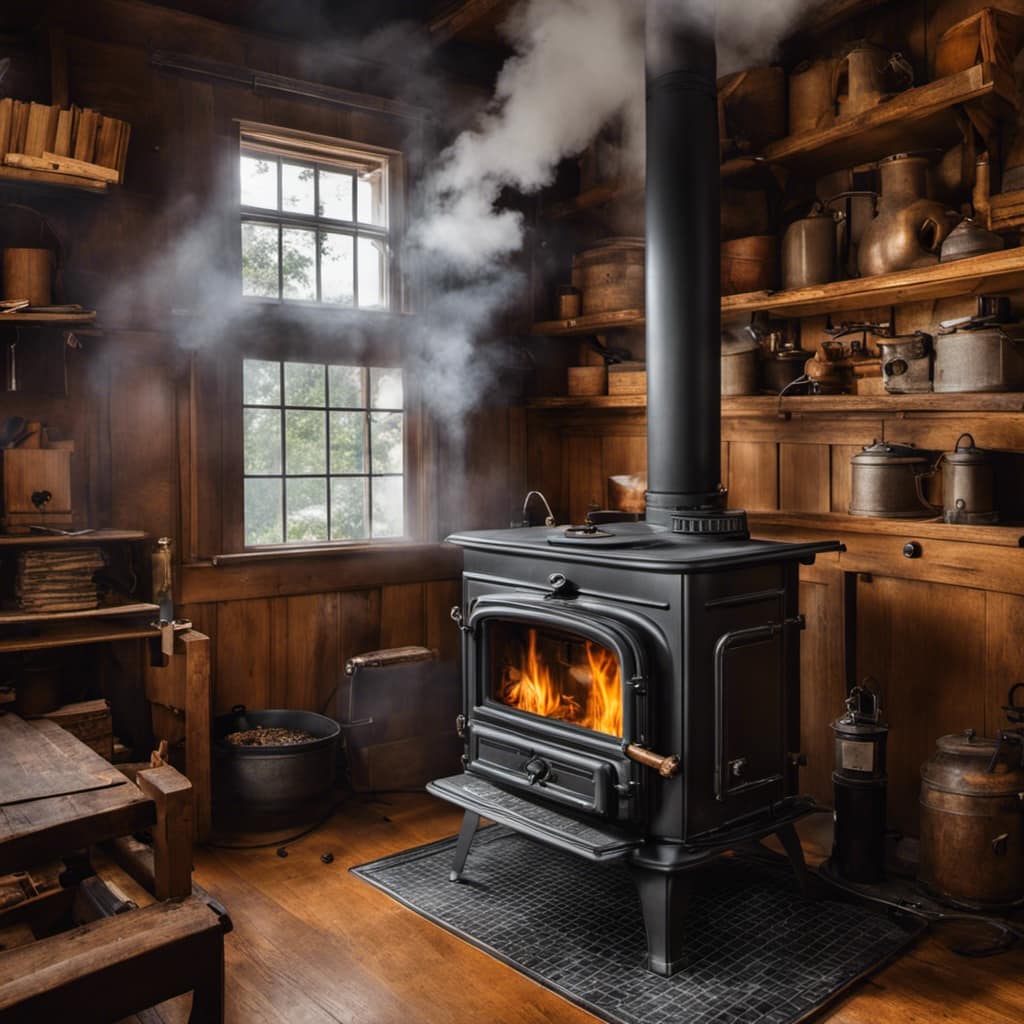
To remove rust, I recommend using a wire brush or sandpaper. Gently scrub the rusty areas until you remove all the loose flakes. Afterward, wipe down the surface with a damp cloth to remove any dust or debris.
Once the rust is gone, it’s time to focus on sanding the stove. By sanding the surface, you create a rough texture that helps the paint adhere better. Use medium-grit sandpaper and sand in a circular motion until the entire surface is smooth.
Remember to wipe away any dust before moving on to the painting process.
Choosing the Right Paint for Your Wood Stove
To ensure a durable and long-lasting finish, it’s essential to choose high-temperature paint for your wood stove. When it comes to painting a wood stove, there are a few important factors to consider. Here are some tips for choosing the right type of paint for your wood stove:
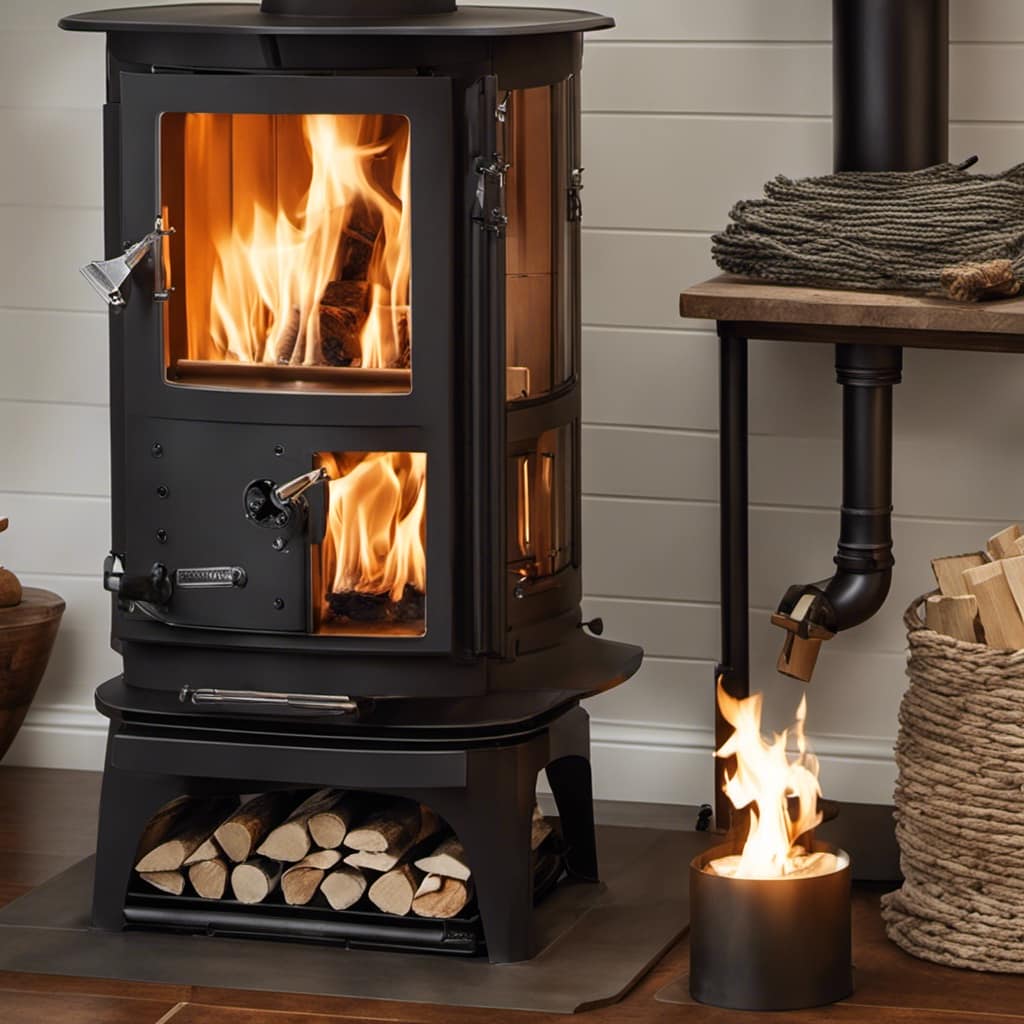
-
Opt for high-temperature paint: Regular paint won’t withstand the extreme heat produced by a wood stove. Look for paint specifically designed for high temperatures, typically rated for temperatures up to 1200°F.
-
Consider the color: Choose a paint color that will complement your home decor. Whether you prefer a traditional black or want to add a pop of color, there are various shades available to suit your style.
-
Look for durability: Make sure the paint you choose is resistant to peeling, cracking, and fading. This will ensure that your wood stove maintains its fresh appearance for years to come.
Cleaning and Priming the Wood Stove
Before painting my wood stove, I need to thoroughly clean and prime it to ensure a smooth and durable finish. Cleaning the wood stove is an important step that shouldn’t be overlooked.

To start, I’ll remove any loose debris and ash from the stove using a brush or vacuum cleaner. Next, I’ll clean the stove’s surface with a mild detergent and warm water, making sure to remove any grease or grime. Safety precautions should be taken during this process, such as wearing gloves and eye protection.
Once the stove is clean, I’ll apply a high-quality primer specifically designed for metal surfaces. This will help the paint adhere better and provide a long-lasting finish.
With the wood stove properly cleaned and primed, it’s now ready for the next step: applying the paint.
Applying the Paint to the Wood Stove
Carefully and evenly, I’ll begin applying the paint to the wood stove, ensuring a smooth and professional-looking finish. To achieve the best results, it’s important to follow these techniques:
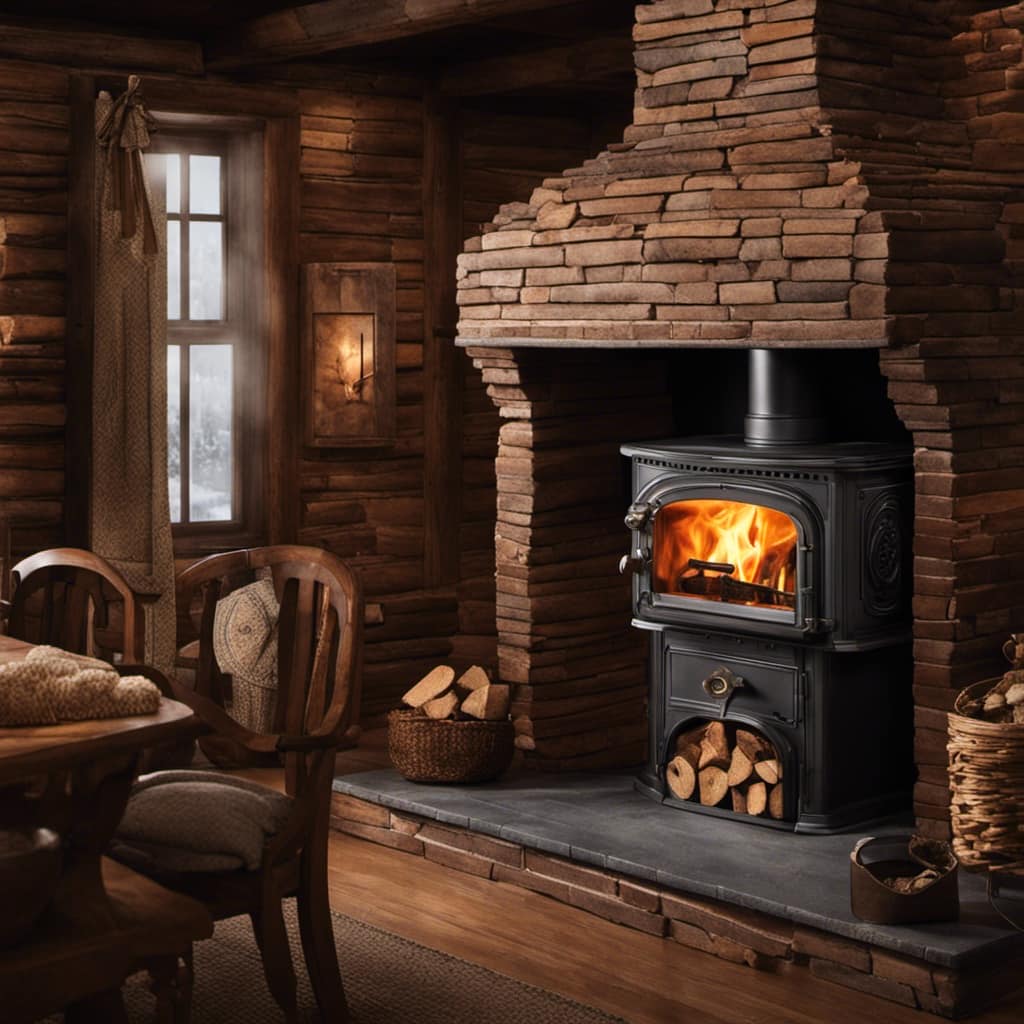
- Start by using a high-quality paintbrush or a paint sprayer for an even application.
- Apply thin coats of paint, allowing each coat to dry completely before applying the next. This will help prevent streaks and drips.
- Use long, smooth brush strokes or spray in a back-and-forth motion to ensure an even distribution of paint.
The drying time for the painted wood stove will vary depending on the type of paint used. Generally, it’s recommended to allow at least 24 hours for the paint to fully cure before using the stove. This will ensure that the paint adheres properly and doesn’t peel or chip.
Once the paint has dried, it’s important to take proper care of your newly painted wood stove to maintain its appearance and longevity.
Caring for and Maintaining Your Newly Painted Wood Stove
I will ensure the longevity of my newly painted wood stove by regularly cleaning and inspecting it for any signs of wear or damage. Caring for the wood stove paint is essential in preventing rust and maintaining its appearance. Here are some tips to keep your painted wood stove looking its best:
| Cleaning | Inspection |
|---|---|
| Use a soft, damp cloth to wipe away any dust or debris on the surface of the stove. | Check for any chipped or peeling paint, as this can lead to rust formation. |
| Avoid using abrasive cleaners or scrub brushes, as they can damage the paint. | Inspect the hinges, handles, and other moving parts for any signs of wear or looseness. |
| For stubborn stains, use a mild soap and water solution and gently scrub the affected area. | Look for any cracks or gaps in the stove’s body that could allow air or moisture to seep in. |
| Dry the stove thoroughly after cleaning to prevent any water from sitting on the surface. | Ensure that the stove’s door gaskets are in good condition and sealing properly. |
Frequently Asked Questions
Can I Use Regular Household Paint for My Wood Stove?
Yes, you can use regular household paint for your wood stove, but it is not recommended. For best results, use high-temperature paint specifically designed for wood stoves. It provides better durability and heat resistance.
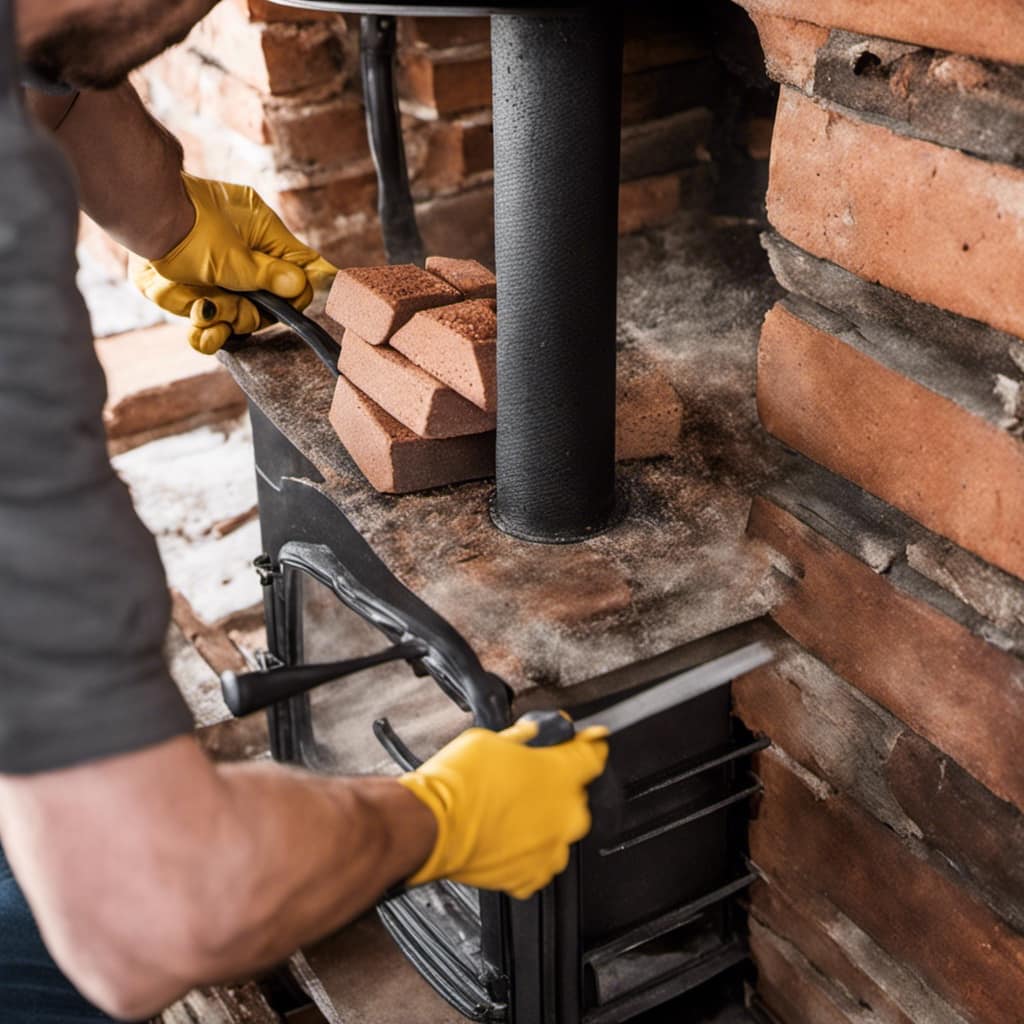
How Long Does the Paint on a Wood Stove Usually Last Before It Needs to Be Touched Up?
The paint on a wood stove usually lasts for several years before needing touch-ups. To ensure longevity, proper preparation is key. Clean the stove thoroughly and choose a high-temperature paint designed specifically for wood stoves.
Can I Paint the Inside of My Wood Stove as Well?
Yes, you can paint the inside of your wood stove, but it is important to take certain precautions. Make sure to use high-temperature paint designed specifically for wood stoves, such as brands like Rust-Oleum or Stove Bright.
Is It Necessary to Sand the Wood Stove Before Applying the Paint?
It is necessary to sand the wood stove before applying the paint. Sanding helps create a smooth surface for better adhesion. However, there are alternative painting methods available that may not require sanding.
Can I Use a Brush Instead of a Spray Paint for My Wood Stove?
Yes, you can use a brush instead of a spray paint for your wood stove. The pros of using a brush include more control and precision, but it may take longer. The cons are that brush strokes may be visible and it can be harder to reach tight spots.
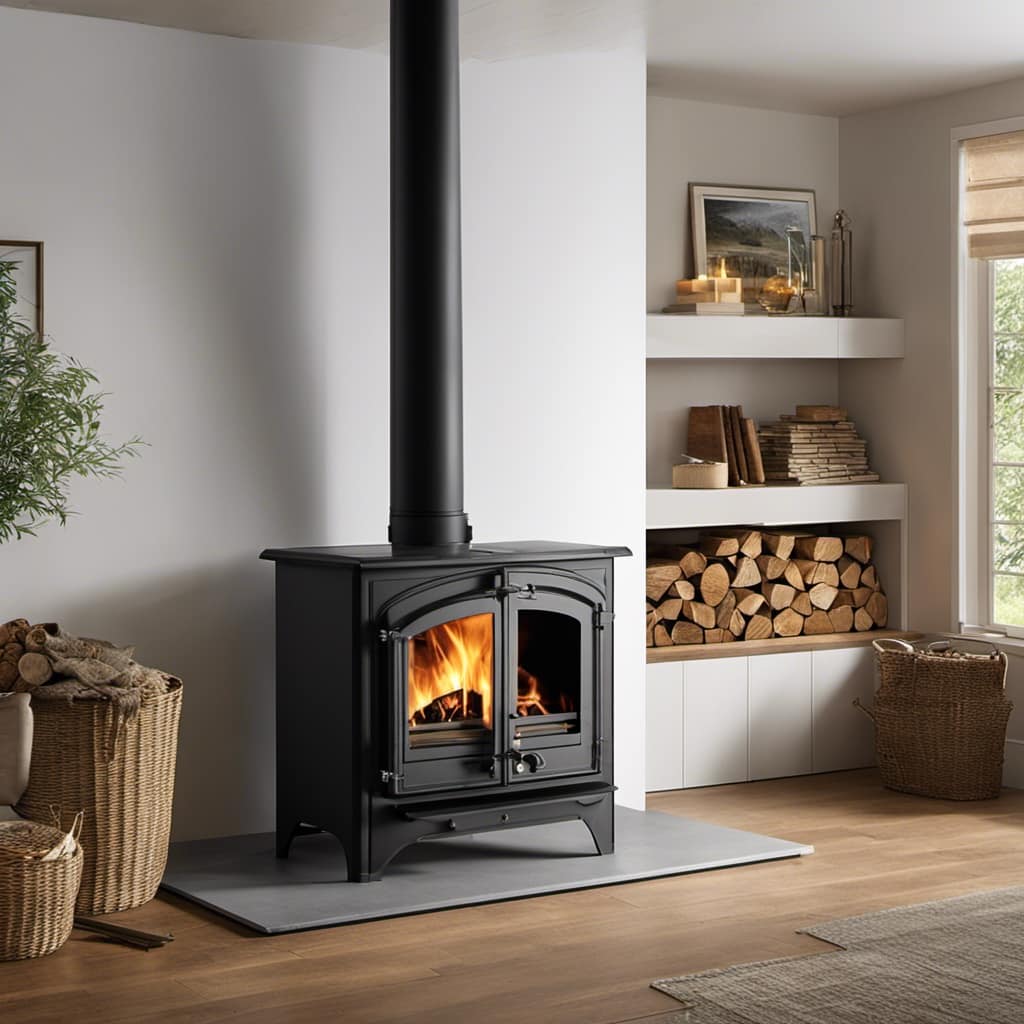
Conclusion
In conclusion, painting your Vermont Casting wood stove is a simple and rewarding process that can bring new life to your appliance. By following the proper steps of preparing the surface, choosing the right paint, cleaning and priming, and applying the paint carefully, you can achieve a beautiful and long-lasting finish.
Remember to regularly clean and maintain your newly painted wood stove to ensure its longevity.
Now, go ahead and give your stove a fresh coat of paint – it’s time to make it shine like a polished gem in your home!
Growing up surrounded by the vast beauty of nature, Sierra was always drawn to the call of the wild. While others sought the comfort of the familiar, she ventured out, embracing the unpredictable and finding stories in the heartbeat of nature.
At the epicenter of every remarkable venture lies a dynamic team—a fusion of diverse talents, visions, and passions. The essence of Best Small Wood Stoves is crafted and refined by such a trio: Sierra, Logan, and Terra. Their collective expertise has transformed the platform into a leading authority on small wood stoves, radiating warmth and knowledge in equal measure.




